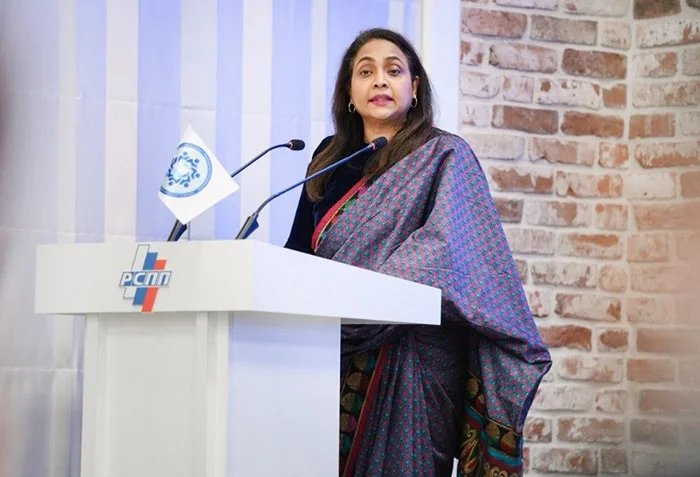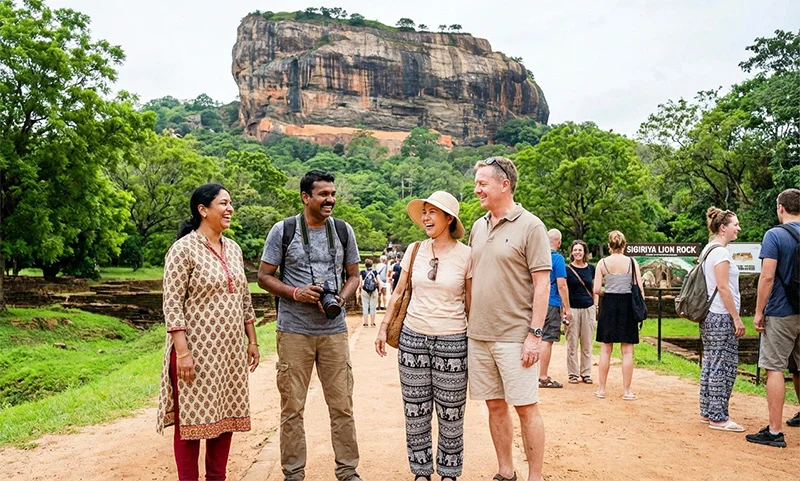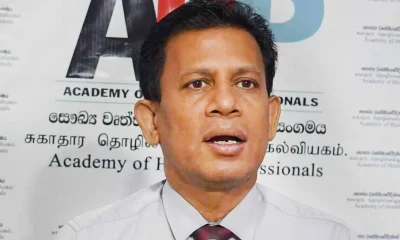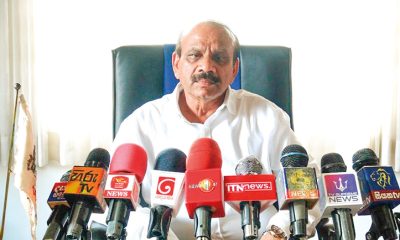News
British Council report highlights urgent need to include young people in climate change policy

*75 percent of young people around the world report having skills to deal with climate change in their communities – but 69 percent have never participated in climate action.
*Concern that voices of women and minority groups overlooked in current climate change policy.
*67 percent of young people feel leaders cannot address climate change alone. Consistent call for young people to be included in policy decisions
Young people around the world unanimously consider climate change to be the biggest threat facing the planet but many struggle to engage in meaningful action and have their voices heard, a British Council report published recently (on 9th September) has revealed.
The Global Youth Letter Report used a mixed methodology approach including crowdsourcing to garner the views, experiences and aspirations of 8,000 young people aged 18-35 across 23 countries – including Brazil, India, Kenya, Sri Lanka and the UK – about their perspectives on climate change. It found a strong, unanimous voice of young people on climate change across all 23 countries.
This research is part of the British Council’s Climate Connection programme, which aims to bring people around the world together to address the challenges of climate change. Research for the report was carried out between January and March 2021.
The findings from the report have been used to write a Global Youth Letter, a plan of action setting out young people’s aspirations and recommendations around climate change. The letter directly addresses the policymakers and world leaders who will attend the UN Climate Change Conference of the Parties (COP26) in November.
25 percent of the young people surveyed globally, came from rural areas, which can be harder to reach, and 75 percent from urban areas. 55 percent of respondents were female. The report also heard from traditionally overlooked groups such as young people with disabilities, and those belonging to minority groups and indigenous communities.
67 percent of young people felt that their country leaders could not address climate change on their own. They raised concerns that the voices of women and minority groups were not reflected in current climate change policy.
The report found a consistent call for young people to be included in policy decisions. Young people felt that their involvement would ensure more innovative ideas for tackling climate change and would have a wider, more effective reach. The findings emphasised a clear need for policymakers to channel the passion and enthusiasm of young people in more practical and structured ways.
The report found that whilst young people are willing and keen to make meaningful contributions, many lack the opportunities to do so. 75 percent of young people reported that they had the skills to deal with climate issues in their communities and 63 percent said that they knew about the UN Climate Change Conference of the Parties (COP26). However, 69 percent said they had never participated in climate change action.
Some of the barriers to youth participation in climate action include limited digital access, hierarchical social cultures that exclude young people, and a lack of access to training and skills development.
The report also highlighted the role and potential of digital channels as a tool for young people to tackle climate change, although acknowledged that the ‘digital divide’ that sees some people excluded from accessing the internet must be taken into consideration.
Young people unanimously viewed social media as an important platform to share messages about climate change with their peers, countering disinformation and influencing those around them. For young people in remote areas without internet access, television and radio can provide them with information about climate change instead.
Young people are encouraged to sign the letter and pledge to tackle climate change, adding their own recommendations to be considered. The letter can be signed here: www.britishcouncil.org/climate-connection/get-involved/global-youth-letter
The Global Youth Letter was launched at a virtual event recently (on 9th September). Insights from the Global Youth Letter will inform ongoing discussions with policymakers in the run up to and during COP26.
The Global Youth Letter includes youth voices from Sri Lanka extracted from the ‘Perceptions of Young People on Climate Change and Action’ research study that was conducted with over 1000 respondents. In relation to youth perceptions, youth in Sri Lanka are generally aware of climate change but the majority does not have a technical understanding and detailed knowledge of it.
There is a significant interest among youth to learn more about climate change, and the majority believes to some degree that their opinions and actions on climate change will matter in the future. When it comes to making this change and engaging in climate action, emphasis was placed on education and showcasing successful practices as a tangible way to inspire and facilitate action. Sri Lanka’s youth believe in collective action for climate change and see it as a public responsibility, not an individual issue, highlighting the need for systemic changes and large-scale actions.
In both urban and rural contexts lack of access to knowledge resources, lack of tutoring and low engagement with government action were highlighted as barriers for youth engagement.
The UK will host COP26 in Glasgow, Scotland, from 1 to 12 November. The British Council is supporting the UK government’s ambition for COP26 to be the most inclusive ever by using its global networks to inspire millions of people around the world to take action against climate change.
News
Delay in govt. response to UK sanctions on ex-military chiefs, and others causes concern

Admiral of the Fleet Wasantha Karannagoda said that he is still waiting for the government’s response to the UK sanctions imposed on three ex-military officers, including him, and a former member of the LTTE.
The former Navy Chief said so in response to The Island query whether he was aware of the position taken by a three-member ministerial committee, consisting of Foreign Minister Vijitha Herath, Justice and National Integration Minister Harshana Nanayakkara and Deputy Defence Minister Maj. Gen (retd) Aruna Jayasekera.
The government named the committee in the wake of the UK declaration of travel bans and asset freezes in respect of Karannagoda, General Shavendra Silva, General Jagath Jayasuriya and Vinayagamoorthy Muralitharan, also known as Karuna. Maj. Gen. Jayasekera said that they inquired into the issue at hand.
Karannnagoda said that he would like to know the government’s recommendations if the ministerial committee briefed the Cabinet as per a decision taken by the Cabinet of Ministers. Karannagoda said that the issue should have been taken at the highest level as various interested parties continue to humiliate the war-winning military by targeting selected individuals.
Other sources, familiar with the issues at hand, told The Island that the government was yet to announce its stand.
Sources pointed out that the Opposition has been silent on what they called a matter of utmost national importance.
Cabinet spokesman Dr. Nalinda Jayathissa is on record as having described the UK move as a unilateral move and that committee was formed to examine the developments and recommend appropriate measures to the Cabinet.
Foreign Minister Herath told The Island the government was not successful in getting the British to withdraw sanctions. Describing the UK decision as unilateral, the Miniser said that the government conveyed its concerns but the UK didn’t change its stand.
The Island raised the issue with Minister Herath and Admiral Karannagoda in the wake of British MP of Sri Lankan origin, Uma Kumaran requesting the UK Foreign Secretary Yvette Cooper to expand on the government’s sanctions imposed on the four above-mentioned persons.
During a Foreign Affairs Committee meeting on 16 December, the MP for Stratford and Bow highlighted the lack of accountability and political will from the current Sri Lankan government to address war crimes and mass atrocities committed in Sri Lanka.
Sources said that David Lammy, who served as Secretary of State for Foreign, Commonwealth and Development Affairs at the time of the declaration of sanctions, had no qualms in declaring that the action taken against four Sri Lankans was in line with a commitment he made during the election campaign to ensure those responsible wouldn’t be allowed impunity. The UK government statement quoted Lammy as having said that this decision ensured that those responsible for past human rights violations and abuses were held accountable.
By Shamindra Ferdinando
News
Sri Lanka outlines seven key vectors of international cooperation at Moscow forum

Sri Lankan Ambassador to the Russian Federation, Shobini Gunasekera recently presented a conceptual framework of seven key vectors that defined contemporary international relations and facilitated dialogue among States. She made the presentation at XI Moscow International Financial and Economic Forum held under the theme “Building Bridges: Partnership without Borders”.
In her address, the Ambassador emphasised that these vectors represent the channels through which ideas circulate, trade expands, and peace is strengthened, serving as guiding principles for cooperation amid global uncertainties. The seven key vectors highlighted were economic ties as a foundation for long-term stability; political choice and diplomacy through dialogue and multilateral engagement; security cooperation to address cross-border threats; cultural linkages through education, tourism, and professional exchanges; technological advancement, particularly in digital systems and artificial intelligence; environmental stewardship through collective action on renewable energy and climate change; and humanitarian obligations, including disaster relief and development cooperation.
Drawing on Sri Lanka’s experience, the Ambassador illustrated the practical application of these principles by highlighting the country’s strategic location in the Indian Ocean, its role as a trade and logistics hub, and its active engagement in regional groupings such as BIMSTEC and the Indian Ocean Rim Association, where the Russian Federation serves as a Dialogue Partner.
The potential for enhanced Sri Lanka–Russia bilateral cooperation was underscored, particularly through complementarities between Russia’s technological and energy expertise and Sri Lanka’s logistical capabilities and maritime infrastructure. She noted that such synergies could support joint initiatives in trade, innovation, tourism, and logistics, while cultural and scientific exchanges would further strengthen mutual understanding between the two countries.
Concluding her remarks, the Ambassador stated that sustained progress requires dialogue, mutual respect, and forward-looking partnerships capable of shaping a shared and stable future.
News
Sri Lanka third most preferred destination for Indians

Thailand takes top place
Travel website Make My Trip has named Sri Lanka as the third most booked international destination by Indian travellers for the festive period, following Thailand and the United Arab Emirates (UAE).
According to a report released by MakeMyTrip, an analysis of booking trends between 20 December and January 2026 compared to the same period last year, highlighted a growing interest in Sri Lanka as a preferred destination.
Thailand ranked first, while the UAE secured second place. Vietnam recorded a notable rise, moving from seventh position last year to fourth this year, followed by Malaysia, Indonesia, Singapore, the UK, the US, and Hong Kong.
-

 News6 days ago
News6 days agoMembers of Lankan Community in Washington D.C. donates to ‘Rebuilding Sri Lanka’ Flood Relief Fund
-

 News4 days ago
News4 days agoBritish MP calls on Foreign Secretary to expand sanction package against ‘Sri Lankan war criminals’
-

 Features6 days ago
Features6 days agoGeneral education reforms: What about language and ethnicity?
-

 News6 days ago
News6 days agoSuspension of Indian drug part of cover-up by NMRA: Academy of Health Professionals
-

 Sports4 days ago
Sports4 days agoChief selector’s remarks disappointing says Mickey Arthur
-

 News3 days ago
News3 days agoStreet vendors banned from Kandy City
-

 Editorial6 days ago
Editorial6 days agoA very sad day for the rule of law
-

 News6 days ago
News6 days agoUS Ambassador to Sri Lanka among 29 career diplomats recalled













